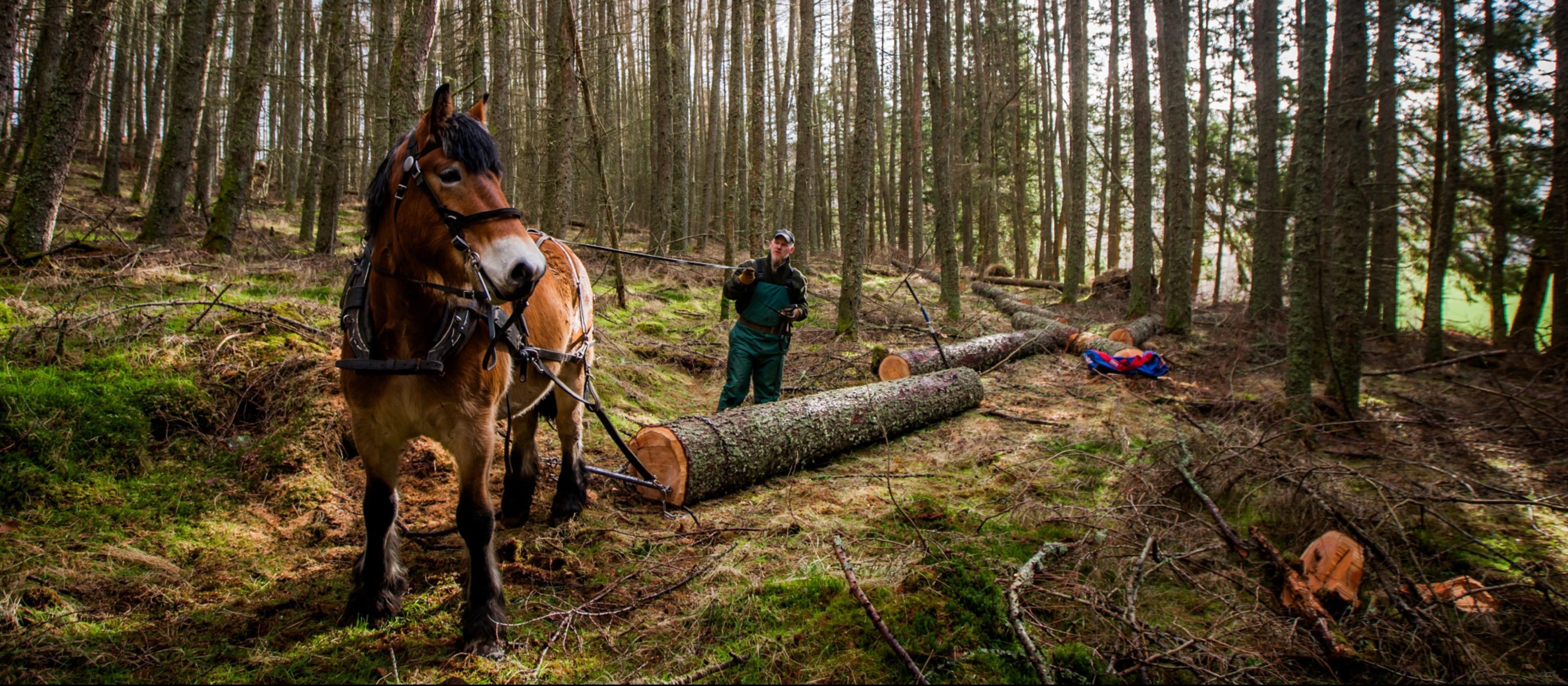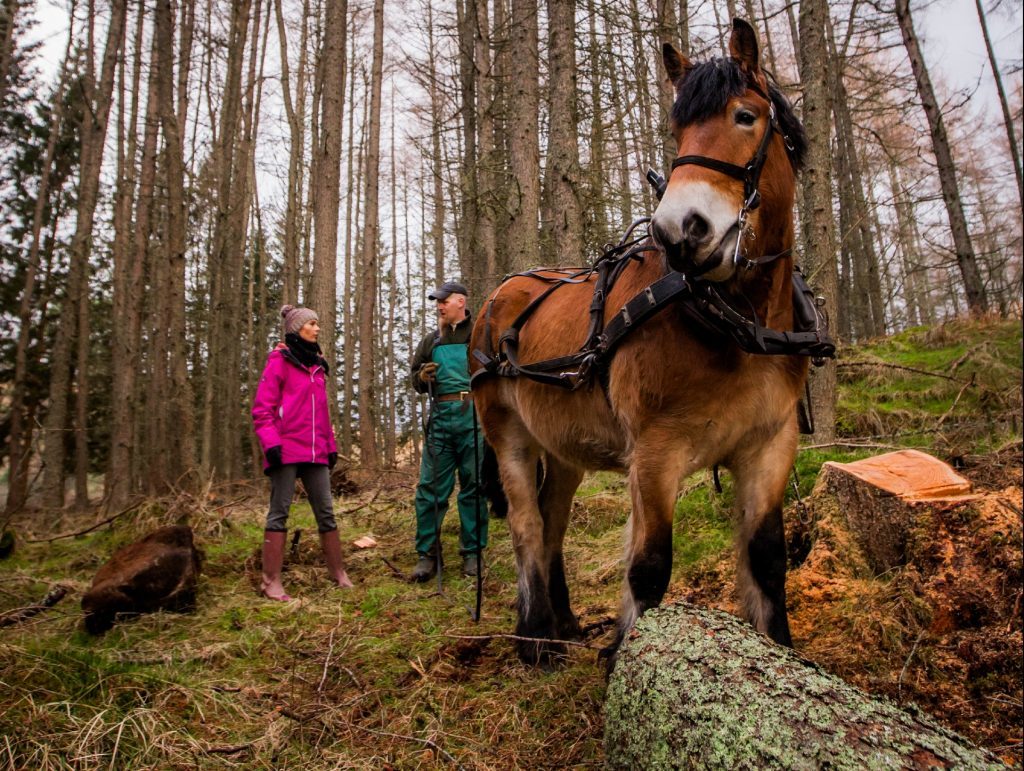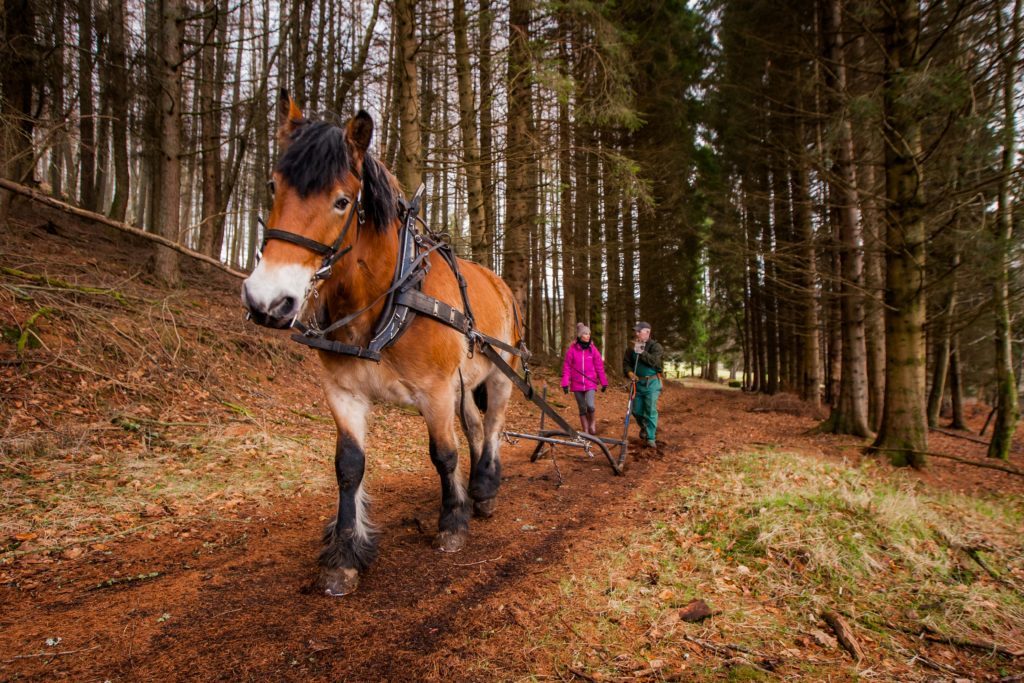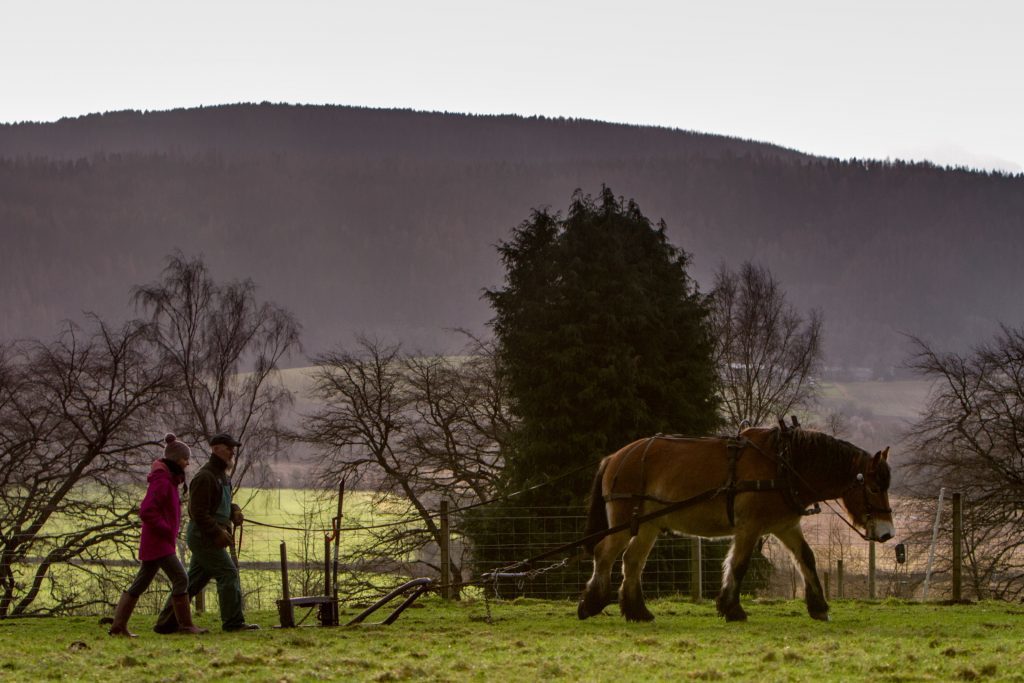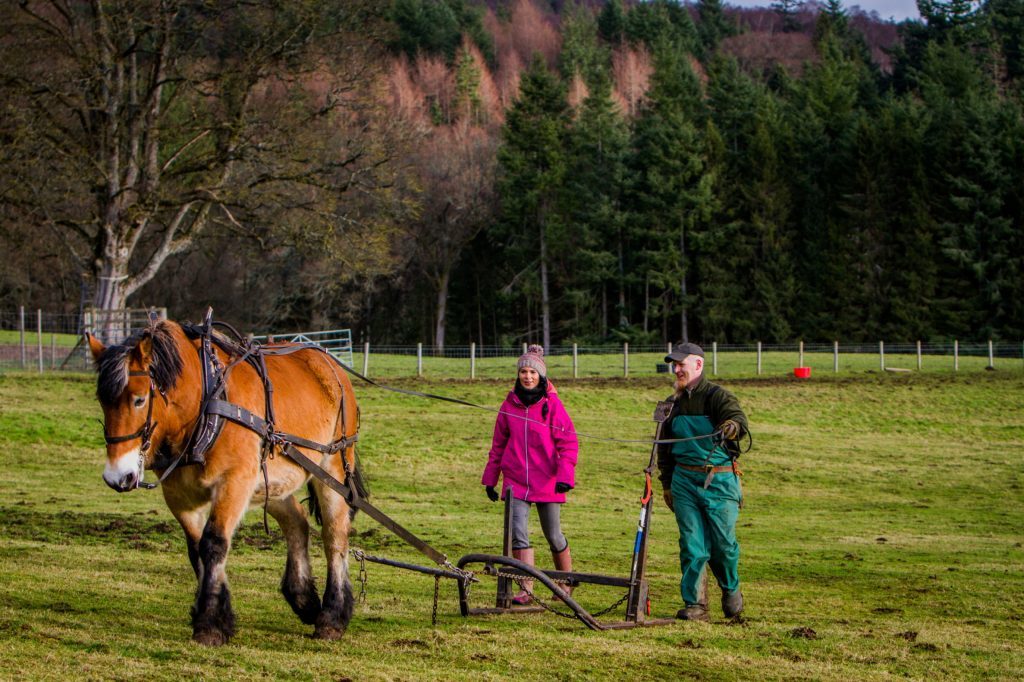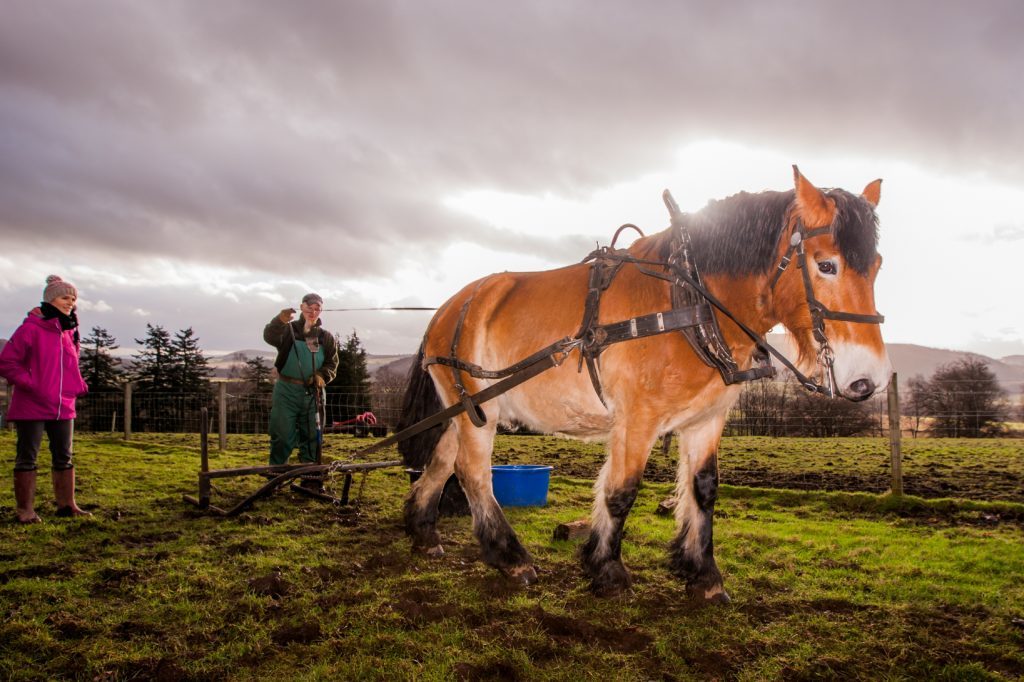The art of horse logging, which dates back 10,000 years, nearly died out during the 1980s as machines took over. But Gayle Ritchie discovers it’s alive and kicking in Courier Country.
Ghalm, a five year old Northern Swedish horse, is dragging a felled log weighing around a tonne out of dense woodland near Comrie.
His handler, Andy Whitaker, gently guides him through the tricky terrain using unique commands.
“Burrrrr,” he says, and Ghalm stops immediately.
Once the log has reached its destination, Andy offloads it and then asks Ghalm to turn and walk over it.
For a 15.2hh heavy horse, his feet are surprisingly dainty, and his step nimble.
An average day might see Ghalm, with huge trunks attached to his harness via a chain, clearing up to ten tonnes of timber.
The bond between man and horse is strong; to do such work requires trust on both parts.
“I love this horse,” says Andy, stroking Ghalm’s soft muzzle. “I work with him and don’t try to control him.”
Commanding him to move left, using the sailing term “lee-oh”, and then right, with “gibe”, Andy reveals he paid for Ghalm to be brought over from Sweden, aged three and unhandled.
“When I first got Ghalm, he wanted a lot of fussing and didn’t know how to be led on a headcollar, but he took to logging quickly,” he says.
So why use a horse and not a machine?
Quite simply, it’s sustainable and environmentally friendly, and Andy is adamant that it’s not an outdated and outmoded relic of the past and, rather, he believes it’s the future.
“There’s very little sign we’ve been here, apart from a few hoof marks,” he says.
“If a machine had been used, the evidence would be there for years. Come back in a couple of weeks and this will be grass – the land heals very quickly.
“The horse doesn’t damage the environment. There’s no oil pumping out and you don’t have the scars and colossal rutting caused by machinery.
Last year, bluebells popped up in a part of the woodland Andy and Ghalm had cleared, a result of scarification.
It comes as a surprise to learn that Andy boasts a past life as a session musician and has only been horse logging for five years.
Growing up in Yorkshire, he worked as a shepherd and then studied music at the Royal College of Music in London.
Taking up the story, Andy says: “I became a professional session musician, playing tuba at major events, including the Proms, and alongside big names like Badly Drawn Boy.
“When I wasn’t playing tuba, I took on sheep shearing and other contracts across the country.”
He’d been tinkering with the concept of horse logging (learning via books and YouTube and buying and training a cob to do the job) when he got a call from the RSNO asking him to perform at Edinburgh’s Usher Hall.
“Up there, on stage, I just thought, ‘I hate this’,” he admits.
“I put the tuba back in its box and never played again. I’d changed too much and just wanted to be out in the woods with a horse.
“It’s kind of like going back to my roots. My first memory is of riding a Dales pony and I grew up driving horses.”
A few decades ago, it would have been rare to have seen anyone working the woods with horses, but it’s becoming more common in England as landowners and foresters learn to appreciate its benefits.
Andy hopes it will become more popular in Scotland, where there’s a “colossal” amount of woodland, much of it too small to bring in machinery.
“I can roll up with the horse, do a few days of work and go away leaving very little trace. If people care about the aesthetics of the land, the horse is perfect.
“We’re always looking for work as it is hard to survive as a horse logger.”
Info
Horse loggers can work in SSSIs, historical sites, on steep ground, near water courses and closes to urban areas, footpaths and parks, with minimum disruption and damage
Andy, who runs Strathearn Horse Logging, is based in Crieff. He is happy to travel across Scotland for work.
For more information, see www.strathearnhorselogging.com or check out the Facebook page at www.facebook.com/strathearnhorselogging/
